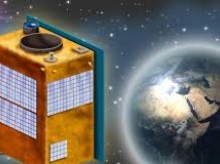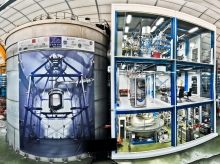ULTRASAT is a scientific mini-satellite carrying a telescope with an unprecedentedly large field of view (210 squared degrees) observing in the ultraviolet (UV, 220-280nm), that is proposed by an Israeli/US collaboration to be constructed and launched to a (near) geostationary orbit by 2022.
ULTRASAT will revolutionize our ability to measure, analyze and understand the most energetic dynamic phenomena in the universe. These include the mergers of neutron stars to black holes accompanied by the emission of gravitational waves and of highly radioactive material, the explosive deaths of massive stars, the disruption of stars by super massive black holes, and much more. ULTRASAT will enable this revolution by providing the first wide-field time-domain UV survey, exploring a new parameter space in wavelength and time-scale (minutes to months stares), with a discovery rate >300 times larger than ever before. It will provide continuous NUV light curves to depths comparable to contemporary ground and space-based time-domain surveys at longer wavelengths (e.g. LSST).
of Ultrasat





